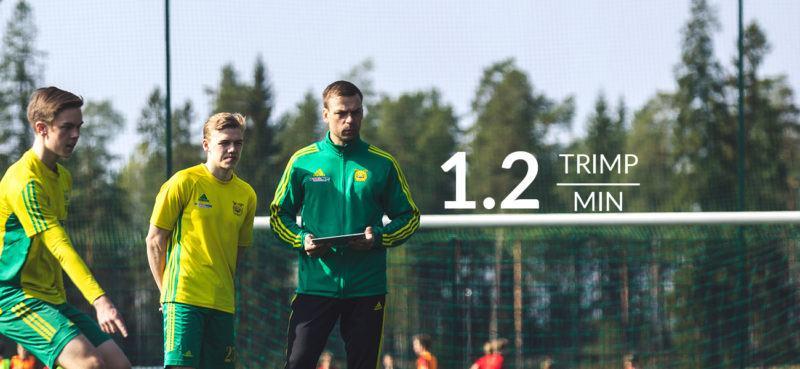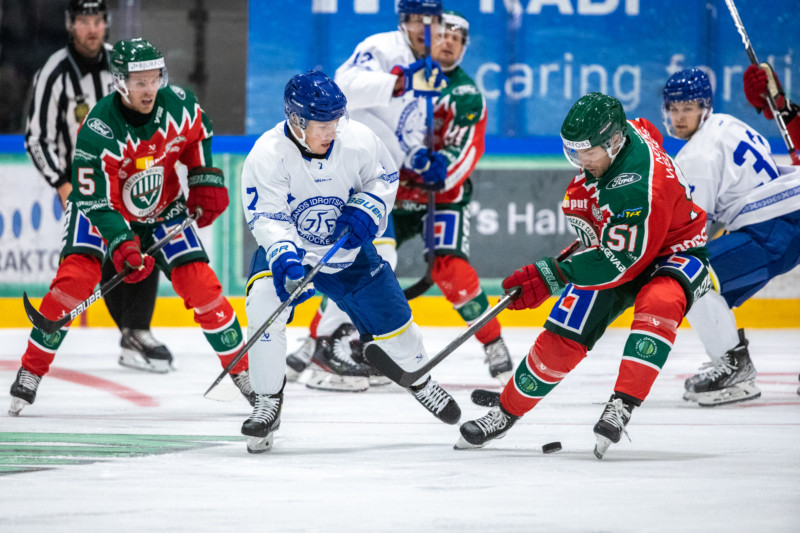
In this series, we’ll be introducing you to some of the coaches and staff taking advantage of the Firstbeat Sports solution to monitor training and recovery. We’ll get their personal view and experiences of how they use Firstbeat in their sport.
Name: Jason Kilijanski
Nationality: American
Sport: Ice Hockey
Role: Strength and Conditioning Coach
Team: Rochester Americans (AHL)

Why do you use Firstbeat?
Obviously Firstbeat is very complex software with quite a few different uses, so the easiest explanation of why we use Firstbeat can be summed up by “we don’t have to guess anymore”. Previous to using Firstbeat, we could have an idea on how taxing a training/ game session was on a player by using things like duration, RPE type scales, and minutes on ice (games). Now, because of Firstbeat we get a more complete picture of what each session is like. As we all know a 60 minute training session can vary from very easy, to extremely hard, now we have hard numbers to represent that, instead of just having to take the players word for it.
How do you implement it in training/games?
All players wear the HR monitors for all practices, and have the option of wearing them for games. We encourage all of them to wear them for games in order to get the most complete picture of a daily, weekly, monthly and season long demands on the body. We also encourage the players to wear the monitors in off- ice training in the gym. We want to make sure that our players are not decreasing in conditioning, but also not doing so much work that it could lead to overtraining. At the AHL level, one of the most beneficial aspects of Firstbeat is the accurate kcal expenditures. Sometimes we play 3 games in 3 days, and for the player to know how much food/drink he has to consume to get back what he just lost in the first game, then the first two games, then all three games is extremely beneficial.
How is Firstbeat effective for your athletes/coaches? What does the data tell you?
The data tells us how hard each session is on the player, which can help us either increase or decrease the players training as we see fit. The game of hockey is very unique in the fact that a first line RW might have 2 x the TRIMP in a game that a fourth line RW has. Even though athletes may play the same positions, there can be a HUGE difference in the player look for each game and training session. We always knew that guys that played more minutes would need more recovery, but I think Firstbeat has helped us to really cement that fact, and be able to show hard data to players and coaches, when it the past it was more on a system of “how do you feel?”.
Can you give us a Key level that is meaningful to you and your athletes in terms of the KEY data point or number? What data/ information do you look at to determine the intensity of the training?
For monitoring the training load we are using TRIMP 90% of the time and Training Effect 10%. We are still trying to find that “key level” for our players, mostly because our weeks can vary so much from week to week. Example; from Nov 4 to Nov8 we play 3 games (3 games in 5 nights), then from Nov 14 to Nov 16 we play 3 games (3 games in 3 nights), clearly those player load sums are going to be significantly different and since the game schedule can’t be altered it is something we must live with. Leading in to the 3 games in 3 nights, or 3 games in 4 nights, we try to keep the daily TRIMP and daily duration of practice down in order to have “enough in the tank” when that 3rd game rolls around.
Do you use the Reports, if so which ones and for what purpose, to give to coaches or to analyze yourself?
I use the Daily Group Report, with TRIMP being the distribution. I analyze it myself, but then will use it if I spot something and want to talk to the coaches about something specific. Also, I have used that report in the past to show players how “difficult” practices were for them compared to another player.
If you liked this article, you should subscribe to our mailing list.
You might also be interested in

Understanding Athlete Training Load: The Benefits of Real-Time Monitoring
Real-time monitoring offers insights that inform decisions like adjusting the intensity and layout of the ongoing practice to make sure predetermined targets are met.

Real-time TRIMP/min: How to Use the Firstbeat Sports App Feature in Training
From replicating game intensity to aiding player rehab, monitoring TRIMP/min has wide-ranging benefits.

Getting Started with Firstbeat Sports – Leksands IF User Story
Jesper Gillerås is the Strength and Conditioning Coach at Leksands IF, a Swedish ice hockey team competing in the SHL, Sweden’s top-tier league. In this interview, Jesper talks about why…
